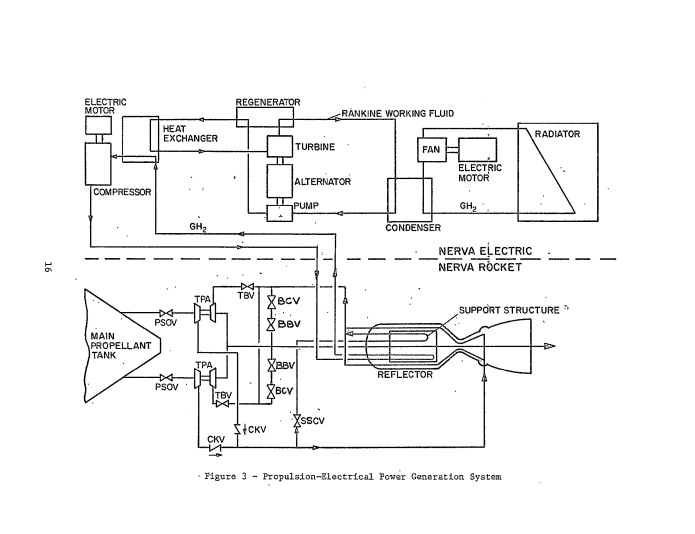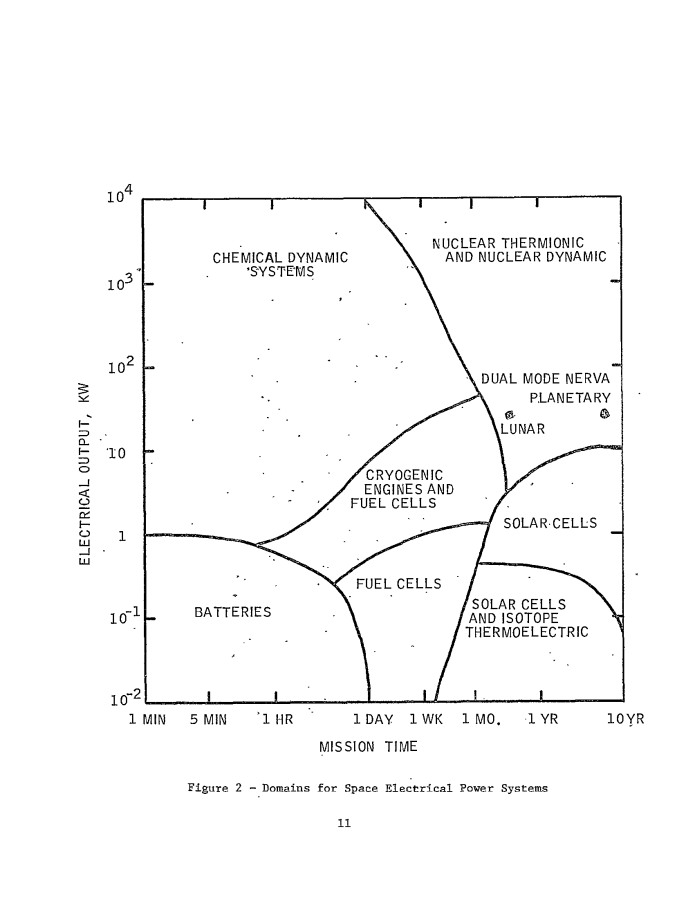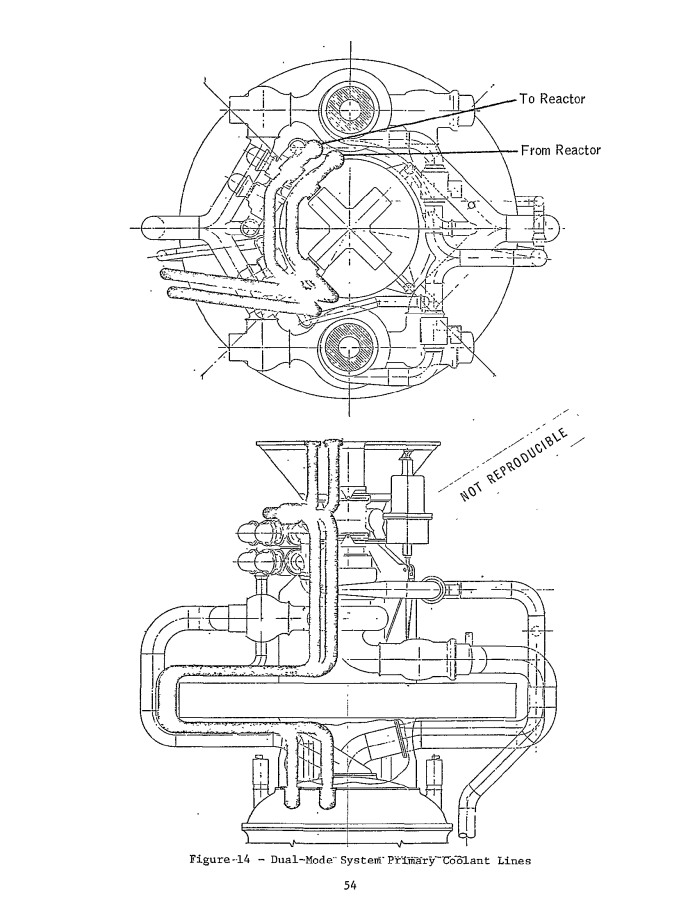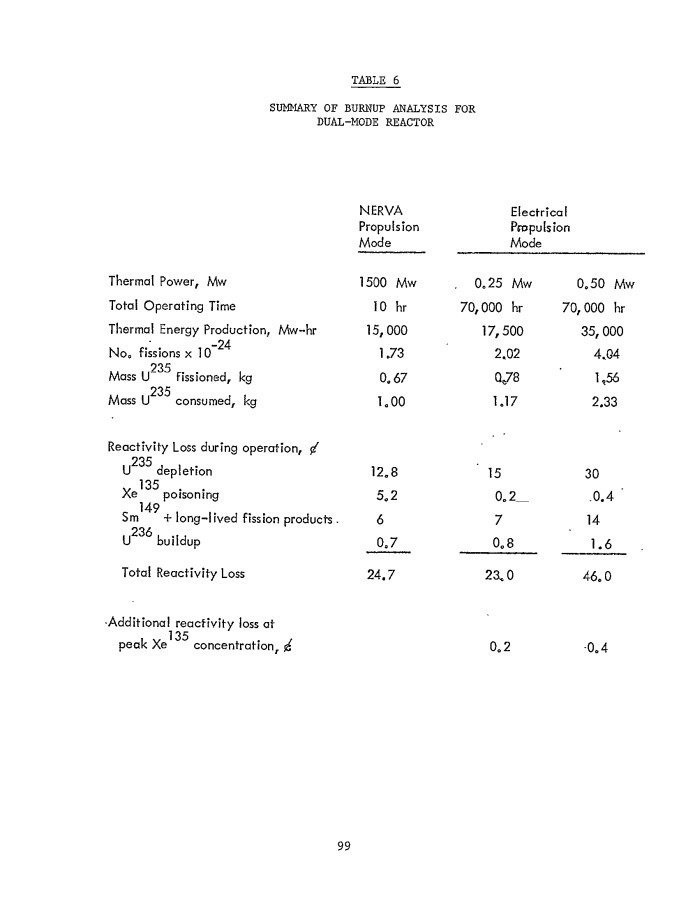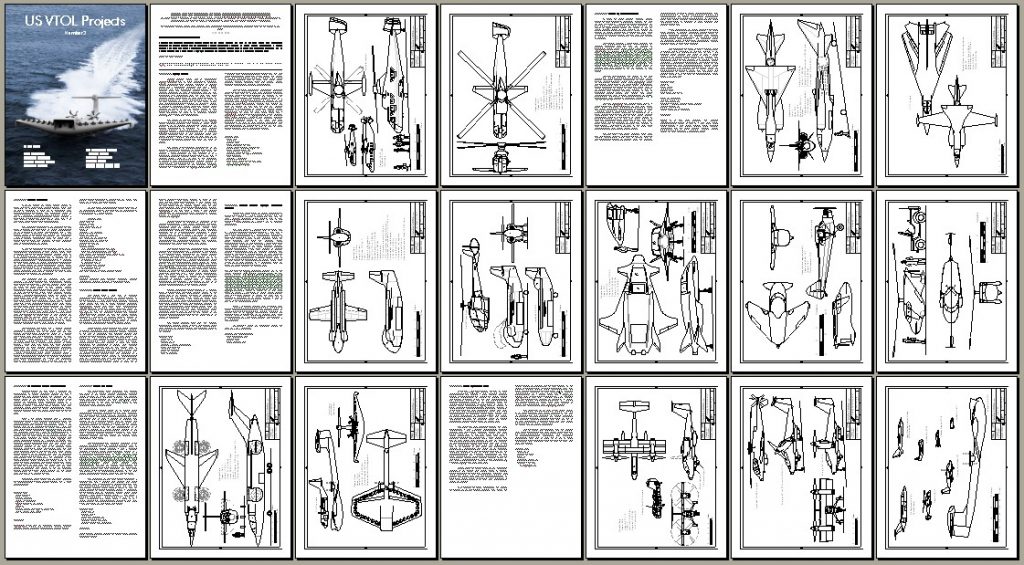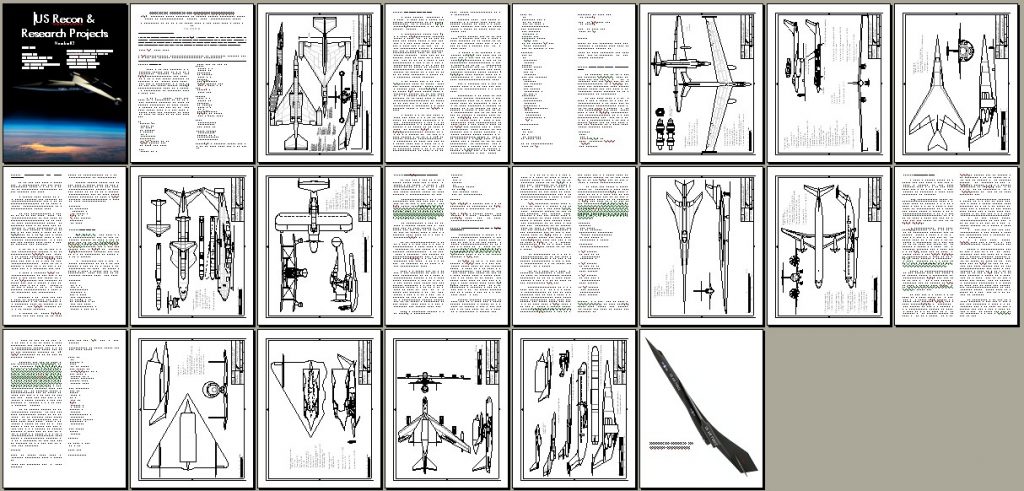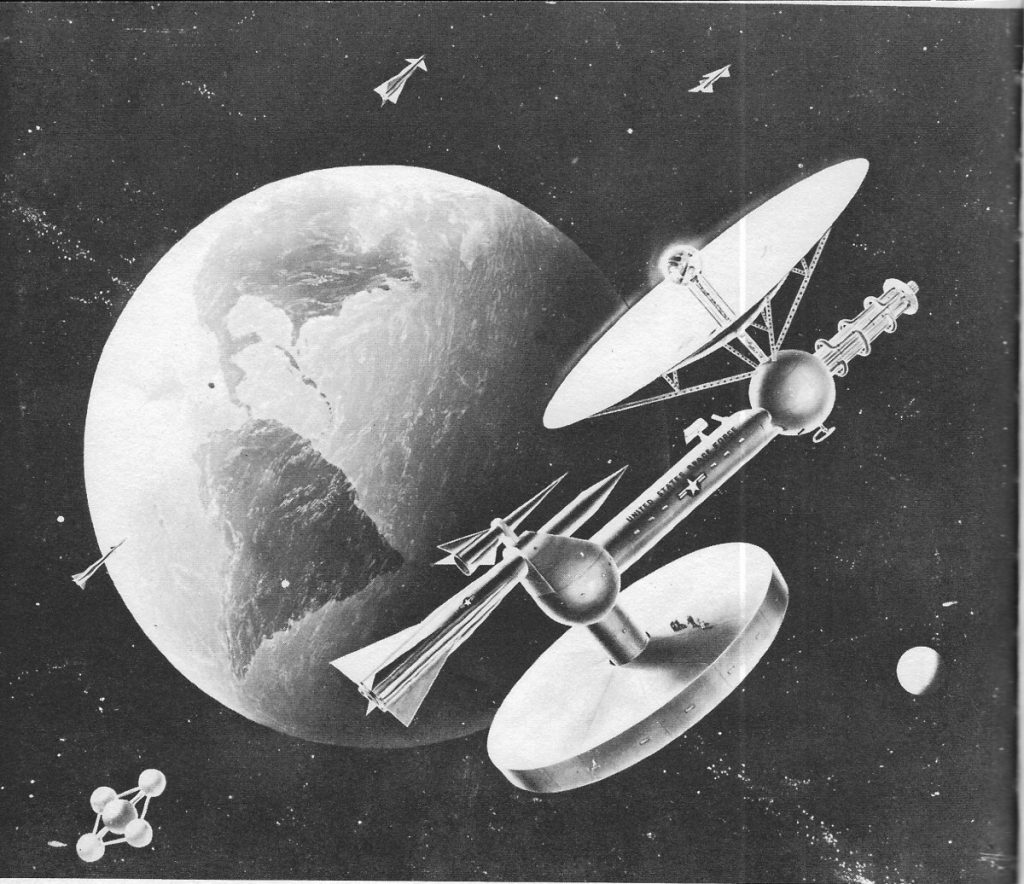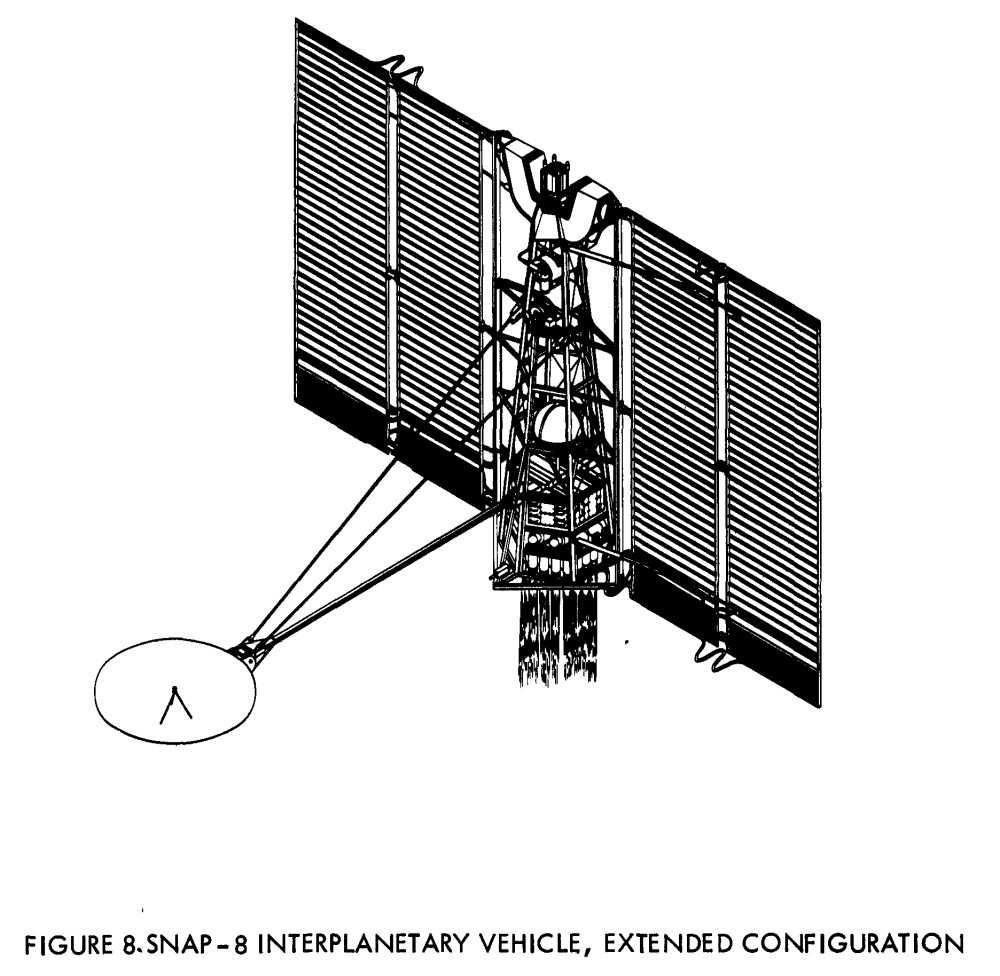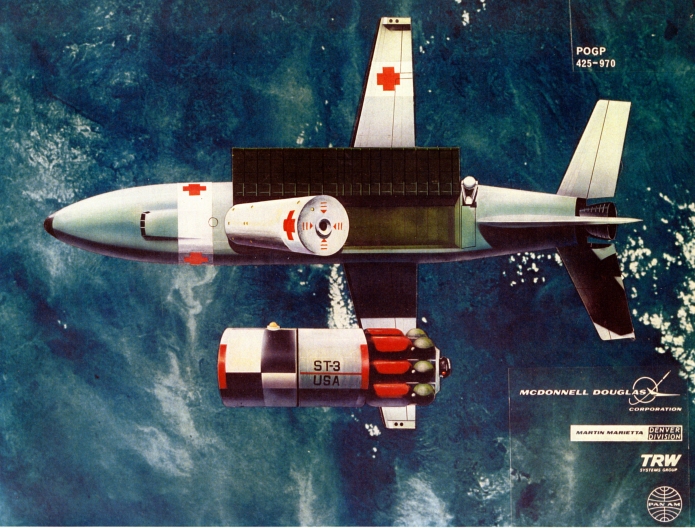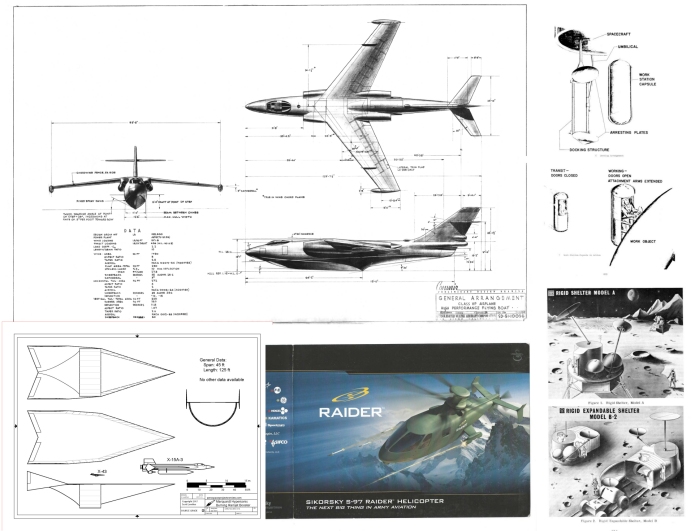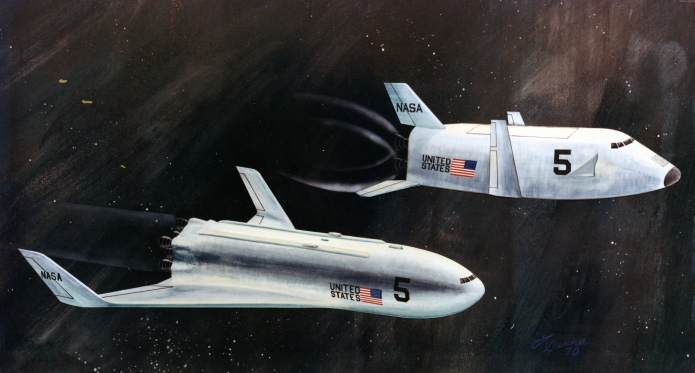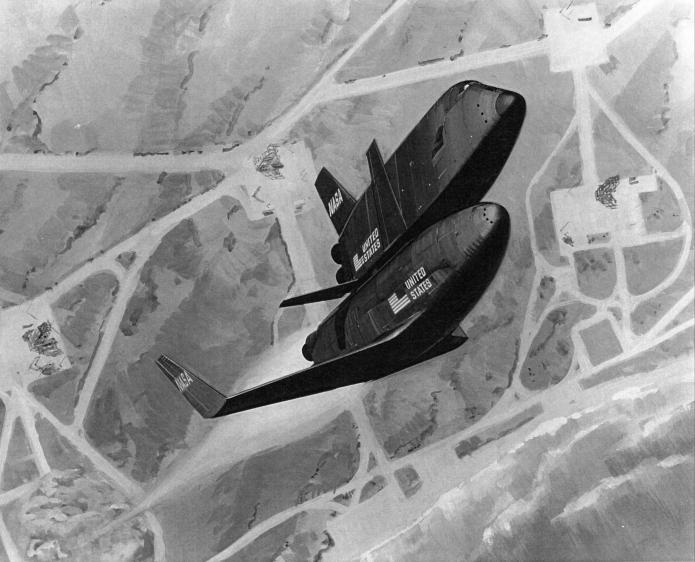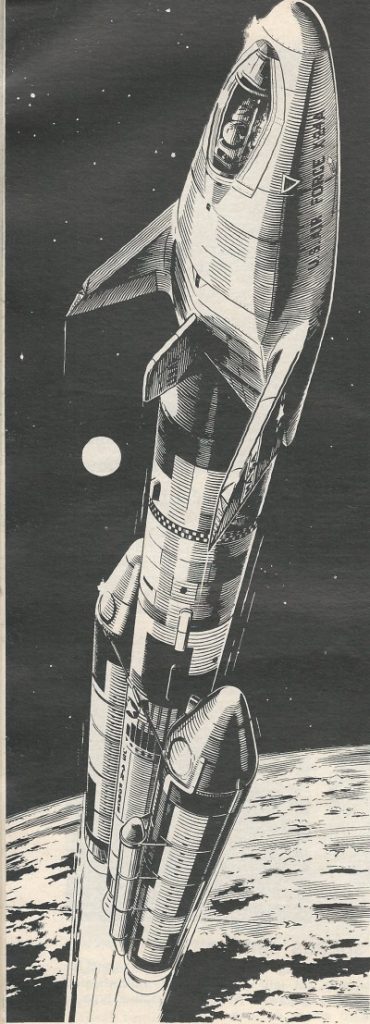The NERVA nuclear rocket, studied throughout the sixties into the early 1970’s, would have been a great way to propel spacecraft. But a nuclear rocket is not the same sort of reactor as is generally designed for use in space to generate electrical power. A NERVA can produce *gigawatts* of thermal energy, energy which is carried away with the high mass flow rate of the hydrogen propellant. Power reactors, on the other hand, are generally designed for several orders of magnitude lower thermal power… a few thermal megawatts, perhaps, to produce a few hundred kilowatts of electricity.
However, the fact remains that a nuclear rocket *is* a nuclear reactor. For most missions it would burn for a few minutes, at most perhaps few hours, out of a mission lasting perhaps years. It is thus a bit of a shame to waste all that potential. So over the decades many studies have been made for using a nuclear rocket as a power generator .
One such study was reported by Aerojet in 1970. The abstract is HERE, the direct PDF download if HERE.
In this study, the NERVA would pump out 1,500 thermal megawatts during the propulsion phase(producing 75,000 pounds of thrust), dropping to 250 to 505 thermal kilowatts during the power generation phase, enough to create 25 kilowatts of electricity. This would be a very low-power, low-temperature use of the reactor, reducing system efficiency… but still, making use of a reactor that was already there, and not noticeably using up the fission fuel in the reactor. The reactor would be run at very lower power levels and hydrogen would flow through a closed loop built into the reactor; the warmed gaseous hydrogen would flow through a turbogenerator to create electricity; the warm hydrogen would then pass through a radiator built on the outer surface of the hydrogen tank itself.
Support the APR Patreon to help bring more of this sort of thing to light!

